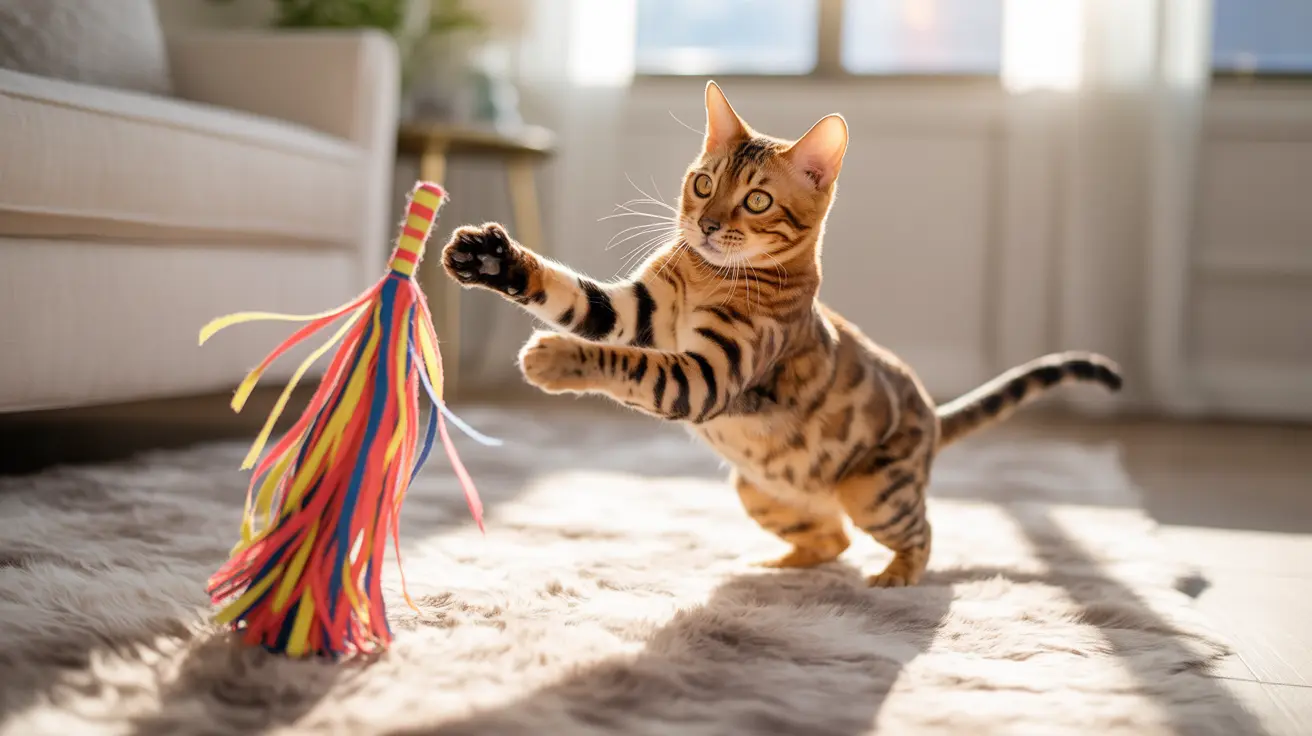What Is a Cat Bunny Kick?
If you've ever watched your cat grab a toy with their front paws and rapidly kick with their back legs, you've witnessed the fascinating feline behavior known as the bunny kick. This distinctive action, which resembles a rabbit's powerful kick, is deeply rooted in cats' natural instincts and serves multiple important purposes in their behavioral repertoire.
From playful kittens to mature indoor cats, this behavior appears across all feline age groups and breeds, demonstrating its significance in cat psychology and physical development. Understanding why cats bunny kick can help pet owners better interact with their feline friends and provide appropriate outlets for this natural behavior.
The Natural Instinct Behind Bunny Kicking
At its core, the bunny kick is a hunting and self-defense mechanism that cats have retained from their wild ancestors. When hunting prey in nature, cats use this powerful kicking motion to subdue larger animals while protecting their vulnerable belly area. The rapid, forceful kicks can effectively incapacitate prey or ward off potential threats.
This instinctive behavior is so deeply ingrained that even well-fed house cats regularly display it during play, demonstrating how natural hunting behaviors persist in domestic settings. The bunny kick serves as a crucial outlet for these inherent predatory drives.
When and Why Cats Display Bunny Kicks
During Play
Playful bunny kicks often occur when cats interact with toys, especially longer items they can grab and hold. This behavior helps cats practice their hunting skills and expend energy in a healthy way. Many cat toys are specifically designed to encourage this natural behavior, featuring materials and shapes that cats can easily grip and kick.
As a Defense Mechanism
When cats feel threatened or overstimulated, they may resort to bunny kicking as a defensive strategy. This position allows them to use all four sets of claws while keeping their vulnerable belly protected. The loose skin on their abdomen, known as the primordial pouch, provides additional protection during these defensive maneuvers.
In Response to Overstimulation
Sometimes, even during gentle petting sessions, cats may suddenly engage in bunny kicking if they become overstimulated. This reaction isn't necessarily aggressive but rather a clear signal that they've reached their threshold for physical contact and need space.
Safe Interaction and Play Tips
To prevent injury while still allowing your cat to express this natural behavior, provide appropriate toys specifically designed for bunny kicking. These "kicker" toys are typically long, stuffed items that cats can safely grab and kick without hurting themselves or others.
Always supervise children around cats and teach them to recognize signs that a cat might be preparing to bunny kick. These signs can include tail twitching, dilated pupils, or skin rippling along the back.
Creating a Safe Environment for Natural Behaviors
- Dedicated kicker toys of various sizes and textures
- Regular play sessions that allow for hunting simulation
- Quiet spaces where cats can retreat if overstimulated
- Multiple enrichment options throughout your home
Frequently Asked Questions
Why do cats perform the bunny kick during play or hunting?
Cats bunny kick during play and hunting because it's an instinctive behavior used to subdue prey and defend themselves. This action allows them to use their powerful back legs while maintaining control with their front paws, making it an effective hunting and self-defense technique.
How can I tell if my cat's bunny kick is a sign of overstimulation or defense?
Watch for signs like tail lashing, dilated pupils, flattened ears, or tense body posture. These indicators suggest your cat is overstimulated or feeling defensive rather than engaging in playful behavior.
What are the best toys to use to prevent my cat from bunny kicking my hands or feet?
Use long, soft toys specifically designed for bunny kicking, often called "kicker toys." These should be at least as long as your cat's body to allow them to fully engage in the kicking motion without targeting human body parts.
How does the bunny kick help cats protect themselves from other animals?
The bunny kick allows cats to use their sharp back claws while maintaining a defensive position that protects their vulnerable belly area. The rapid kicking motion can effectively deter potential attackers.
What steps can I take to reduce the risk of getting scratched or hurt from my cat's bunny kick?
Never encourage your cat to play with your hands or feet, provide appropriate toys for kicking, respect your cat's body language, and stop petting when you notice signs of overstimulation. Always supervise children's interactions with cats.
Conclusion
Understanding and respecting your cat's bunny kick behavior is crucial for maintaining a healthy relationship with your feline companion. By providing appropriate outlets for this natural instinct and recognizing the signs that precede it, you can ensure both you and your cat remain safe while allowing for natural expression of this important feline behavior.






